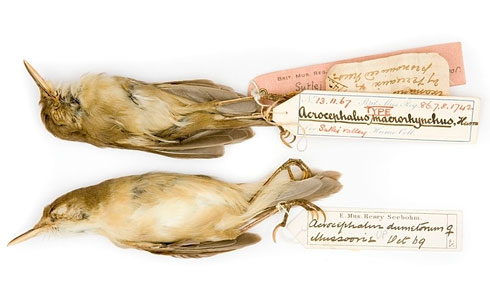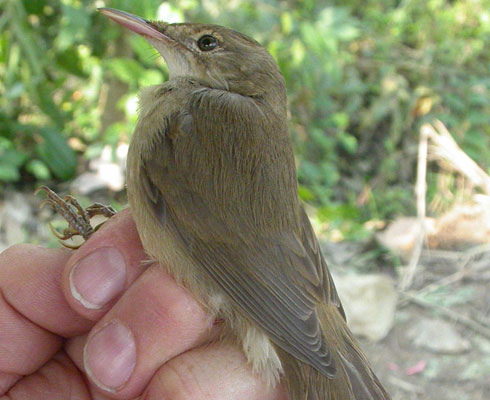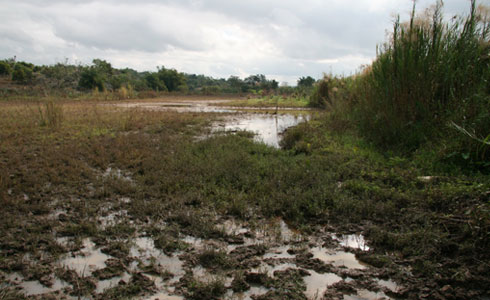Acrocephalus orinus (large-billed reed warbler)
The large-billed reed warbler, Acrocephalus orinus, was originally described by A O Hume in 1871 from a single individual taken in 1867 in the Sutlej Valley, north west India. He originally named it macrorhynchus, but this was subsequently found to be pre-occupied and was replaced by orinus (Oberholser, 1905).
The species lived a twilight existence for the first 130 years after its description - no further specimens showed up and the type specimen was increasingly considered to be a slight aberrant of Blyth’s reed warbler (Acrocephalus dumetorum).
However, in 2002, a molecular study confirmed its species status, and since then our knowledge of the large-billed reed warbler has increased greatly through a combination of museum-based studies and field work.
Species detail
-

Taxonomy
For a long time the large-billed reed warbler was confused with other similar species, notably Blyth’s reed warbler. Find out how we know the 2 are separate species.
-

Distribution and habitat
After being overlooked for so many years, knowledge about the large-billed reed warbler has exploded since 2006. Researchers re-examined Museum bird collections and uncovered further specimens. Wintering birds have now been discovered in south-east Asia and breeding populations in mountain valleys in central Asia.
-

Behaviour
Large-billed reed warblers migrate in summer to high altitude breeding grounds where they tend to skulk in shrub vegetation, although breeding males sing from high, exposed perches. Find out where they breed.
-

Conservation
This species appears to be scarce and vulnerable. Find out what threatens its habitat.
-

References
Get reference material for Acrocephalus orinus.
Images

The type specimen of the large-billed reed warbler above the second museum specimen of the species to be discovered (mis-identified on the label as Blyth’s reed warbler).

Thailand’s second large-billed reed warbler, caught at Nam Kham Nature Reserve, Chiang Saen, on 27 March 2008.
© P D Round/The Wetland Trust
Large-billed reed warbler wintering habitat at Nam Kham Nature Reserve, Chiang Saen, Thailand.
© P D Round/The Wetland Trust
Typical vegetation communities in Wakhan, Afghanistan. Large-billed reed warblers breed in riparian bushland along the river bank.
© R Timmins/WCS Afghanistan Program
Riparian bushland near Goz Khun, Wakhan, Afghanistan, where large-billed reed warblers breed.
© R Timmins/WCS Afghanistan Program
Mist-netting for large-billed reed warblers next to sea buckthorn bushes near Goz Khun, Wakhan, Afghanistan, in June 2009
© WCS Afghanistan ProgramAbout the author

Dr Robert Prys-Jones
Collections Manager, Birds and Head of Bird Group, Department of Life Sciences.
A word from the author
"The story of the large-billed reed warbler provides a wonderful example of the natural synergy that exists between old museum collections and new field research in comprehending the biodiversity of our planet."
